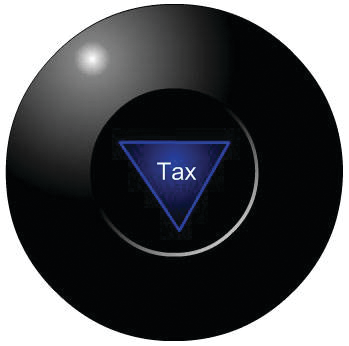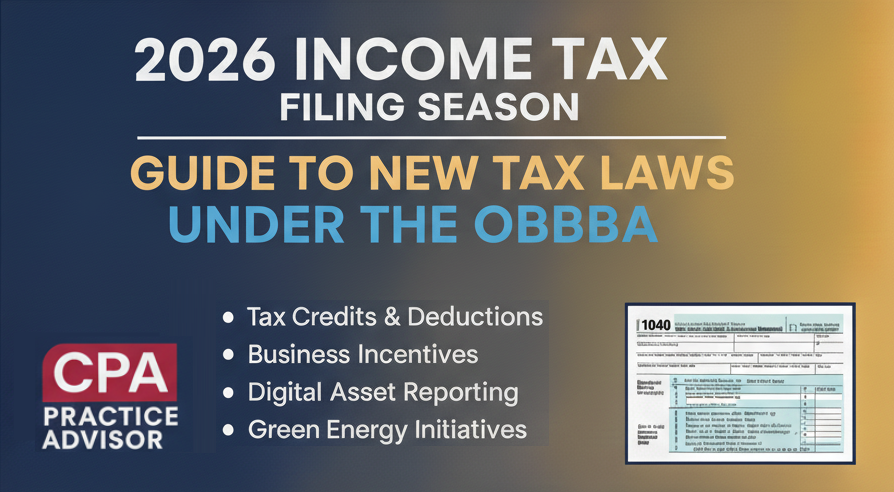From the Sept. 2013 issue.
On the conference room shelf of a CPA’s office I visited recently, I noticed a Magic 8-Ball with the label “free tax answers.” When turned, the die floating in colored liquid inside the ball presses against the window to reveal an affirmative, negative, or non-committal answer such as “cannot predict now.”
While I found the CPA’s 8-ball to be a clever joke, serious tax planning in uncertain times often takes a similar approach. A Magic 8-Ball with phrases customized for tax accountants would contain statements like “if tax rates go up” and “if Congress extends current tax law.” Although some tax law changes may seem to be more predictable than others, I’ve learned to expect the unexpected. For example, who would have guessed that Congress would allow the estate tax to lapse in 2010?
Tax planning reached unprecedented levels of difficulty near the end of 2012 as the United States approached the fiscal cliff. At the time, the potential expiration of the Bush tax cuts along with the expiration of many other provisions likely caused many accountants to advise their clients to do the opposite of traditional tax planning.
Strategies included accelerating income and postponing expenses to avoid significantly higher tax rates in 2013. After months of debate, Congress passed the American Taxpayer Relief Act of 2012, resulting in lower tax liabilities for many taxpayers than had we gone over the fiscal cliff. Unfortunately, some accountants spent the New Year’s Day holiday studying the new tax laws.
2013 Reviews of Tax Planning Systems
In this review, we looked at 4 income tax planning systems.
- BNA Income Tax Planner
- CCH ProSystem fx Planning
- Intuit Lacerte Tax Planner
- Thomson Reuters Planner CS
While today’s professional tax planning systems can’t tell you what future tax law is going to be, tax accountants can extract useful information from them for developing tax strategies. With the help of these sophisticated software packages, accountants can project tax liabilities several years into the future under multiple scenarios. Each scenario may contain varying amounts of income, deductions, carryovers, dependents, exemptions, credits and other quantifiable details from tax returns. Accountants can adjust each scenario for anticipated tax law changes, such as standard deduction and exemption amounts, expiration of tax credits, and various tax rates and brackets.
These tax planning systems can generate reports helping taxpayers weigh the impact of earning additional income or making additional deductions. For example, conversions of traditional IRAs to Roth IRAs have been a popular tax planning strategy since the limits based on modified adjusted gross income and taxpayer filing status were removed for conversions made after December 31, 2009. With the help of the software, accountants can produce professional-looking reports, assisting clients to make an informed decision between converting to a Roth IRA in the current year or in subsequent years.
An example of comparing one-year scenarios is a client who wants to know the tax implications of holding an appreciated stock, selling it, or donating it to charity. Chances are that tax planning software will calculate the tax for each scenario more accurately than an accountant can in his or her head and more easily than on a spreadsheet.
Some of the tax planning software reviewed in this section contain advanced tools for handling complexities with your individual income tax client base beyond calculating federal income tax, such as estimating state and local income taxes, integration with tax research programs, as well as charts and graphs. Also, some programs import data from tax preparation software, resulting in significant time savings.
Most importantly, tax planning software empowers accountants to perform value-adding activities like analyzing clients’ future tax positions and reducing tax liabilities. Where traditional compliance services may be viewed as overhead, effective tax planning can turn tax accountants into superheros in the eyes of their clients.
Although there is always some degree of uncertainty in tax planning, tax superheros don’t use the Magic 8-ball. They stay current on tax law changes, are informed about pending tax bills in Congress, and use their tax planning systems to their full potential.
Thanks for reading CPA Practice Advisor!
Subscribe Already registered? Log In
Need more information? Read the FAQs
Tags: Income Taxes, Software, Tax Planning





